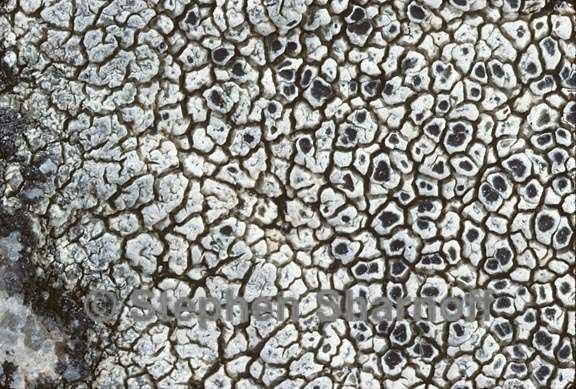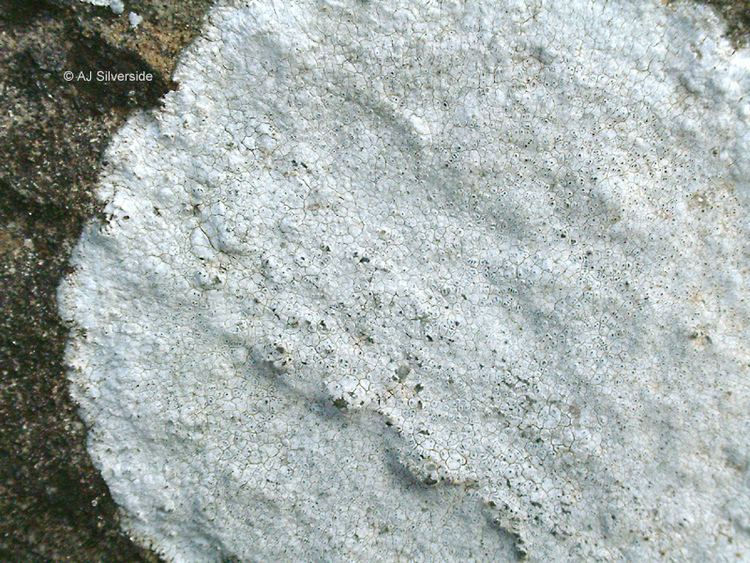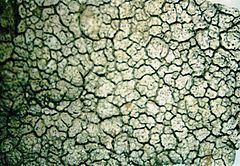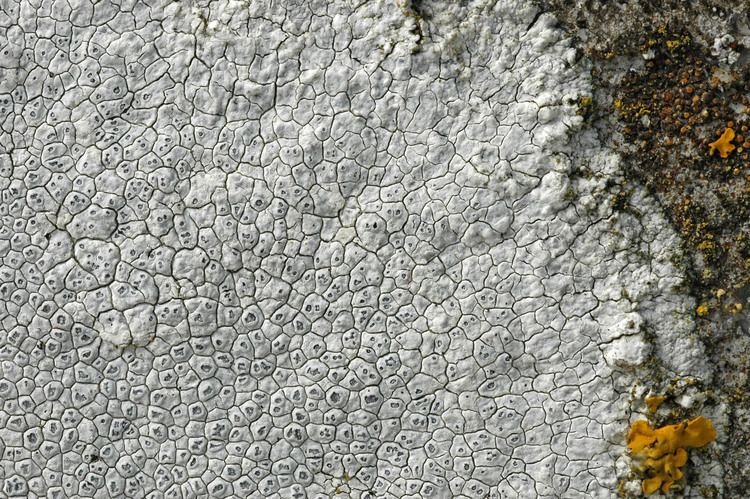Kingdom Fungi | Scientific name Aspicilia Rank Genus | |
 | ||
Similar Acarospora, Lecanora, Caloplaca, Buellia, Lecidea | ||
Aspicilia intermutans fungi kingdom
Aspicilia (sunken disk lichen) is a genus of mostly crustose areolate lichens that grow on rock. Most members have black apothecia discs that are slightly immersed in the areolas, hence the common name.
Contents
- Aspicilia intermutans fungi kingdom
- Aspicilia candida fungi kingdom
- Description
- Classification
- References

Most of the species of this genus grow on calcareous and acidic rocks and most of the taxa prefer temperate and arctic habitats.

Some members of the ‘‘Aspicilia’‘ genus are pioneer species on granite and other hard rock, after which members of other lichen species may grow on them, such as members of Acarospora.

Aspicilia candida fungi kingdom
Description

Members of this genus are weakly cracked to distinctly areolate, with a scattered to whole thalli. Some of the species of this genus are disc-shaped with plicate lobes at the circumference; these lobes may appear chalky white, grayish, greenish or brownish. Some possess vegetative means of propagation such as isidia (column-like structures of fungal and algal cells normally found on the top-side or outer cortex of the lichen) and soredia (structures that produce soralia, granule-like masses of intertwined fungal and algal cells occurring on top of the cortex and on the margins).

They have characteristic ascomata which are mostly immersed but occasionally emergent. They have 4 to 8 spored asci that are cylindrical to club-shaped. Their ascospores are typically ellipsoid to globose in shape, colorless and thin-walled. They often contain β-orcinol depsidones (secondary metabolites of lichens) such as norstictic acid and stictic acids; others have fatty acids or triterpenes. In genus Aspicilia dramatic changes in growth forms are very common, and some taxa may display extreme transitions within the same population or even changes within the same thallus.
Classification

Previously placed in the family Hymeneliaceae, phylogenetic analyses indicate that the genus is better placed in the family Megasporaceae.
